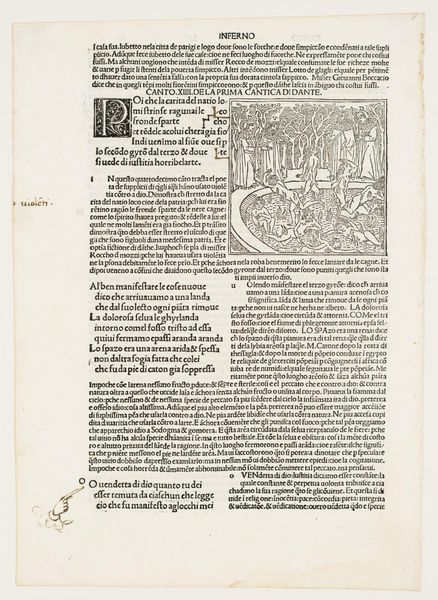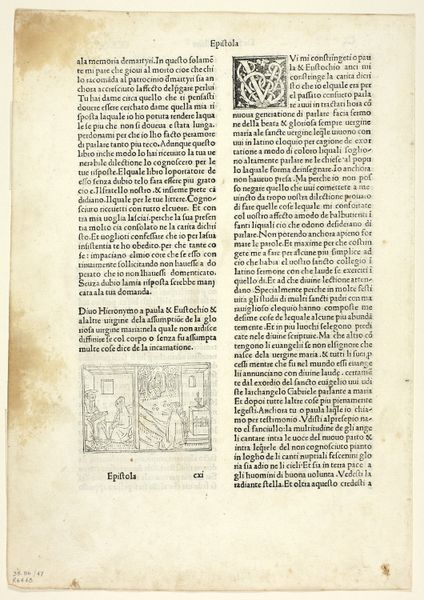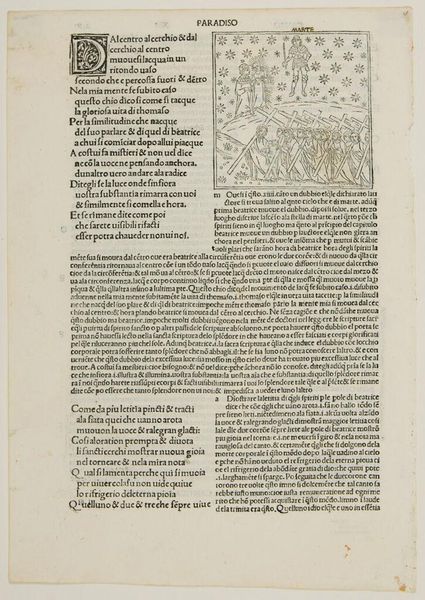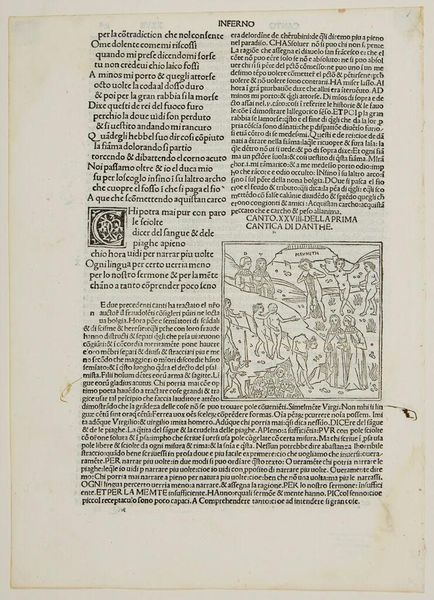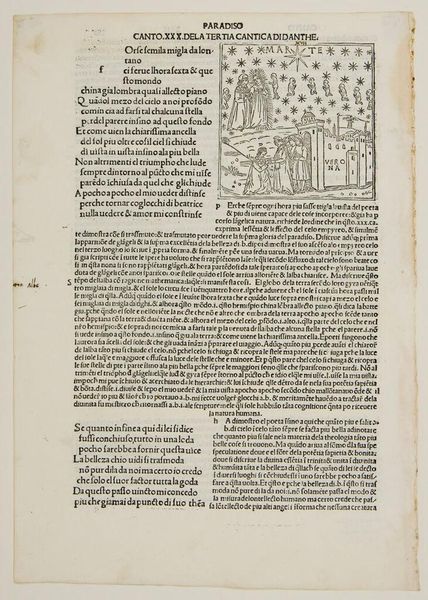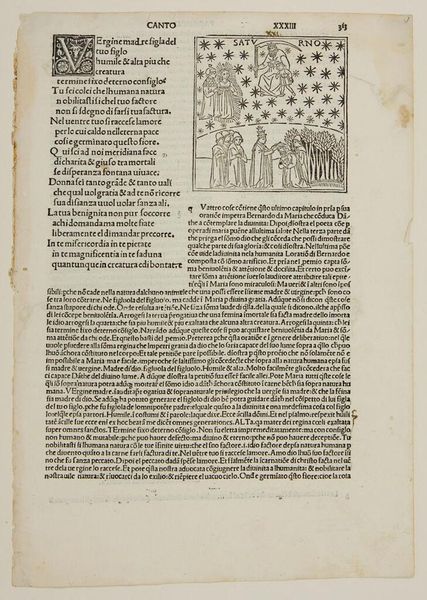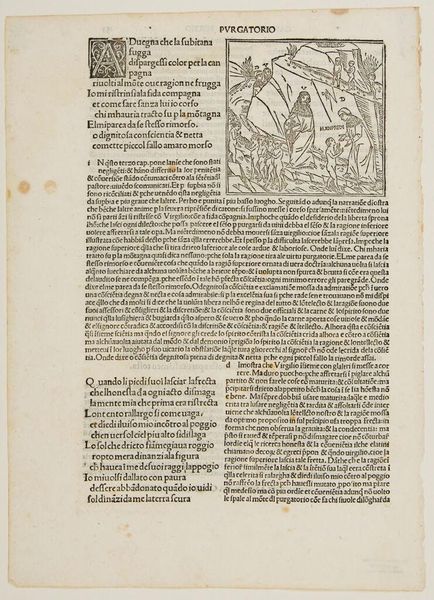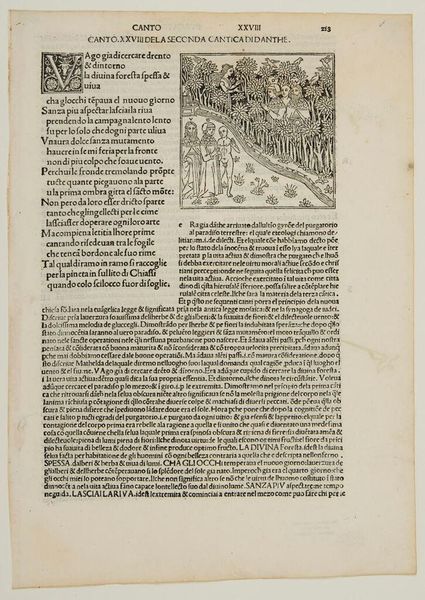
Sostrata, Pamphilus (recto) and Laches, Socrates, Pamphilus (verso) from Comoediae (Comedies), Plate 51 from Woodcuts from Books of the 15th Century c. 1497 - 1929
0:00
0:00
drawing, print, textile, paper, woodcut
#
drawing
# print
#
textile
#
paper
#
11_renaissance
#
woodcut
Dimensions: 49 × 83 mm (image); 303 × 208 mm (sheet)
Copyright: Public Domain
Curator: It’s interesting to consider "Sostrata, Pamphilus" and its companions within the context of late 15th-century book illustration. Attributed to Monogrammist IA, this print—or, should I say, a page from a printed book—mingles a woodcut with dense blocks of text. It seems to be held by The Art Institute of Chicago. Editor: My initial reaction is to the sheer density of information on the page. It's a testament to the value they placed on space, or rather, the lack of it. The woodcut feels almost… squashed by the text, but there is something powerful in that co-existence. It's chaotic, yet contained. Curator: Absolutely. And note the characters depicted within the woodcut itself—the gestures, the drapery—it gives the viewer insight to 15th century morality. In the original play by Terence, Pamphilus struggles between love and social obligation. The image, combined with the surrounding text, speaks volumes about cultural ideals and the tensions inherent in them. Editor: I also think that it emphasizes class differences. Look at the clothing on the people and then compare that with all of this fancy writing which must have been expensive to do and purchase. In a lot of ways, this piece highlights how little some things have changed since then. Like what is luxury and what things really hold value. It all has to do with how one sees themselves amongst the society and culture surrounding. Curator: Certainly. And let's not forget the materiality. We are talking about a woodcut, after all—a relatively accessible printing technique at the time. But the fact that this particular image comes from a book also complicates its status. Is it high art? Is it functional illustration? Is it an educational resource? Editor: Or perhaps it is all of the above? To view this piece as being put in only one category could diminish its depth as well. This image invites viewers to appreciate the work and consider the story alongside a deep understanding of where the cultures stand during the time period in which it was published. Curator: Yes, and it encourages us to confront some enduring human dilemmas. A valuable, if dense, lesson in the history of image-making. Editor: It also challenges us to recognize that the struggles for love, freedom, and truth haven’t changed all that much over time, only our interpretations of it do. A testament to history's enduring relevance in a quickly moving world.
Comments
No comments
Be the first to comment and join the conversation on the ultimate creative platform.


